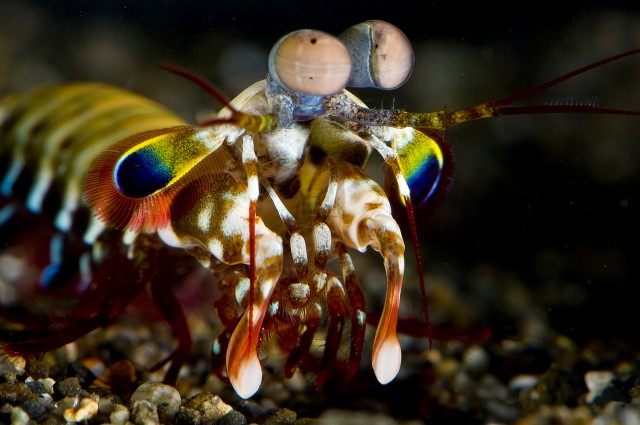One of the strangest animals on earth gets a little weirder
Ars Technica » Scientific Method 2014-01-29

Mantis shrimp, the psychedelic reef-dwellers that can wallop their prey with an astounding 200 pounds of force, have a large collection of unique qualities. One is an unusually large number of photoreceptors, the light-sensing proteins that contribute to color vision. Humans have three types of color receptors, birds and reptiles have four, and mantis shrimp have an astounding 12 different kinds.
Each type of photoreceptor samples a small set of wavelengths in the color spectrum, but our vision demonstrates that just three or four channels are sufficient to distinguish between different hues even on a very fine scale. Why, then, would these creatures need 12 types of photoreceptors?
According to a new study in Science, mantis shrimp may use a vision system previously unknown to science. This key to this realization was the finding that despite having so many different photoreceptors, the animals have trouble distinguishing between similar colors.
Read 7 remaining paragraphs | Comments




